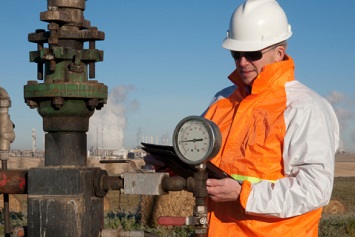The National Institute for Occupational Safety and Health (NIOSH) recently published a fact sheet on hazards faced by workers in the oil and gas (O&G) extraction sector. One such hazard is exposure to diesel exhaust (DE), which contains diesel particulate matter (DPM).
Diesel engines are omnipresent in many industries and are most commonly found in trucks, earth-moving equipment, and other equipment such as compressors and generators. In its fact sheet, NIOSH notes a research paper that found that all O&G workers are potentially exposed to exhausted DMP.
Health Effects
Short-term exposure to high concentrations of DPM can cause headaches, dizziness, and irritation of the eyes, nose, and throat severe enough to distract or disable workers engaged in hazardous tasks. Prolonged DPM exposure can increase the risk of cardiovascular, cardiopulmonary, and respiratory disease and lung cancer.
No OSHA Standard
OSHA has also addressed this issue, although not in a standard. While OSHA does have permissible exposure limits (PELs) for components of DPM, such as carbon monoxide, nitric oxide, and nitrogen dioxide, there is no PEL specifically for DPM. OSHA notes that monitoring for these gases can provide an indication of the presence of DE and can be of help in evaluating the effectiveness of engineering and administrative controls implemented to minimize the potential for exposure to DE when working with or around diesel-powered equipment.
The Department of Labor’s Mine Safety and Health Administration (MSHA) does enforce its DPM standards in underground mines. MSHA’s requirements include a limit on miner personal exposure to DPM of 160 micrograms per cubic meter (µg/m3) of total carbon when measured as an 8-hour, time-weighted average. Other requirements address feasible engineering controls, respiratory protection, the sulfur content of fuels, and limits on engine emissions (see MSHA’s single source page for both coal and metal/nonmetal mines).
In a fact sheet, OSHA provides the following guidelines for controlling worker exposure to DPM.
Engineering Controls
Engineering controls are the most effective strategy for minimizing worker exposure to DPM. A combination of controls is often required. Examples include:
- Performing routine preventive maintenance of diesel engines to minimize emissions
- Installing engine exhaust filters
- Installing cleaner-burning engines
- Installing diesel oxidation catalysts
- Using special fuels or fuel additives (e.g., biodiesel)
- Providing equipment cabs with filtered air
- Installing or upgrading main or auxiliary ventilation systems, such as tailpipe or stack exhaust vents, to capture and remove emissions in maintenance shops or other indoor locations
Administrative Controls
Administrative controls refer to changes in the way work tasks are performed to reduce or eliminate the hazard. Examples include:
- Limiting speeds and using one-way travel routes to minimize traffic congestion
- Prohibiting and/or restricting unnecessary idling or lugging of engines
- Restricting the amount of diesel-powered equipment and total engine horsepower operating in a given area and ensuring that the number of vehicles operating in an area does not exceed the capacity of the ventilation system
- Designating areas that are off limits for diesel engine operation and/or personnel travel

